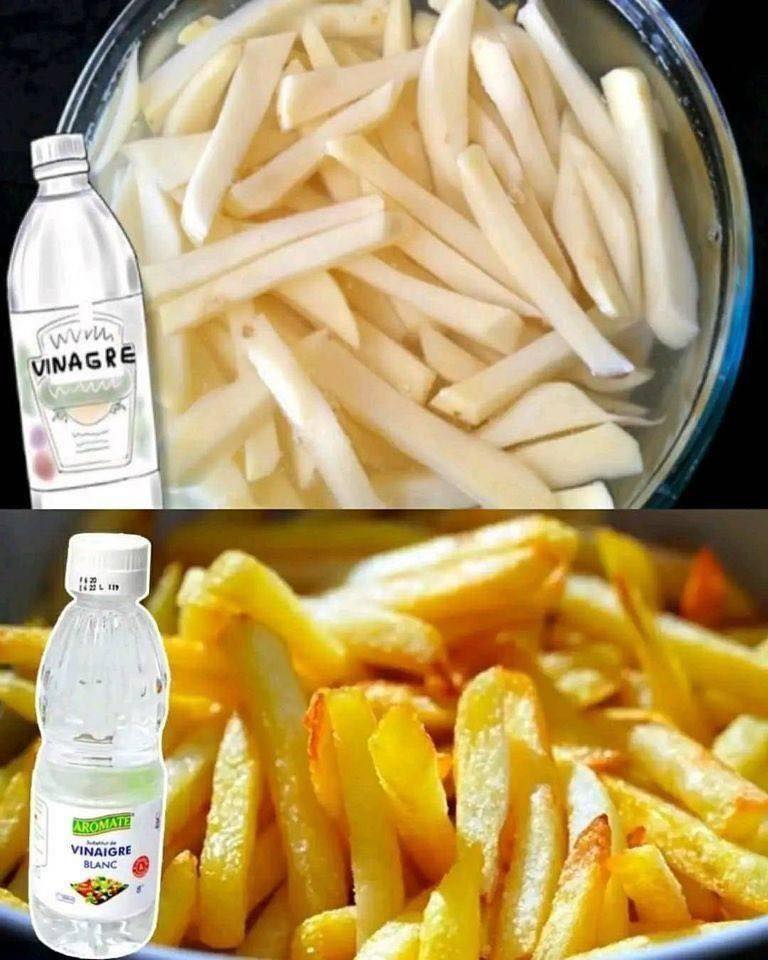ADVERTISEMENT
Why Vinegar is Essential for Crispy Fried Potatoes
The science behind using vinegar in cooking is fascinating. Vinegar’s acidic nature plays a crucial role in enhancing the texture of fried potatoes. When potatoes are soaked in a vinegar solution before frying, the acidity helps break down the surface starches. This process not only prevents the potatoes from sticking together but also creates a barrier that allows them to crisp up beautifully when fried. The result is a golden-brown crust with a tender and fluffy interior.
Preparing the Potatoes
Start by selecting the right type of potatoes. Russet potatoes are ideal for frying due to their high starch content, which aids in achieving a crispy texture. Begin by peeling and cutting the potatoes into even slices or wedges, depending on your preference. Uniformity in size ensures that the potatoes cook evenly.
Next, prepare a vinegar solution by mixing one tablespoon of vinegar with a quart of cold water. Soak the potato slices in this mixture for at least 30 minutes. This step is crucial as it allows the vinegar to penetrate the surface of the potatoes, setting the stage for maximum crispiness.
Frying the Potatoes
After soaking, drain the potatoes and pat them dry with a clean kitchen towel. Ensuring the potatoes are dry is essential, as excess moisture can lead to oil splattering and uneven cooking. Heat a generous amount of oil in a deep frying pan or Dutch oven. The oil should be heated to around 350°F (175°C) for optimal frying.
Carefully add the potatoes to the hot oil in batches, avoiding overcrowding the pan. Overcrowding can lower the oil temperature and result in soggy potatoes. Fry the potatoes until they are golden brown and crispy, usually about 5 to 7 minutes per batch. Use a slotted spoon to remove the potatoes from the oil and place them on a paper towel-lined plate to drain excess oil.
Enhancing Flavor
While vinegar contributes to the texture, seasoning is key to flavor. Immediately after frying, season the potatoes with salt. The residual heat helps the salt adhere better. For an extra flavor boost, consider adding spices like paprika, garlic powder, or fresh herbs such as rosemary or thyme. These additions can elevate the taste profile and complement the vinegar-enhanced crunch.
Why This Technique Works
Utilizing vinegar in the preparation process is not just a culinary trick but a scientifically-backed method to improve texture. The acidity in vinegar alters the pectin in the potato’s cell walls, strengthening them and promoting crispiness. This technique is similar to the way chefs use acid to tenderize meat, showcasing vinegar’s versatility and effectiveness in cooking.
Moreover, this method is cost-effective and easy to incorporate into your cooking routine. With just a little planning, you can transform ordinary fried potatoes into an extraordinary dish that impresses family and friends. Whether for a casual meal or a special occasion, mastering this technique will make you the go-to person for perfect fried potatoes.
Conclusion
Incorporating vinegar into your fried potato preparation is a game-changer. This simple step can make a significant difference in texture, resulting in perfectly crispy potatoes every time. The combination of science and culinary art ensures that your fried potatoes are not only delicious but also impressive. So, the next time you’re in the mood for this beloved dish, remember the vinegar trick. It’s an easy and effective way to elevate your cooking and delight your taste buds with every bite.
Whether you’re a seasoned cook or a kitchen novice, this method is accessible and guaranteed to enhance your culinary repertoire. Give it a try and enjoy the satisfying crunch of perfectly crispy fried potatoes.
ADVERTISEMENT


